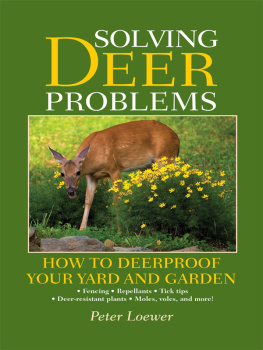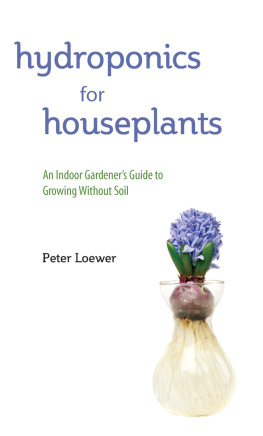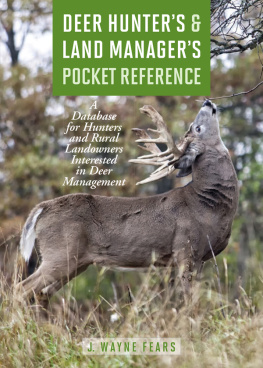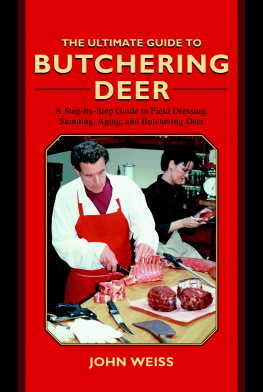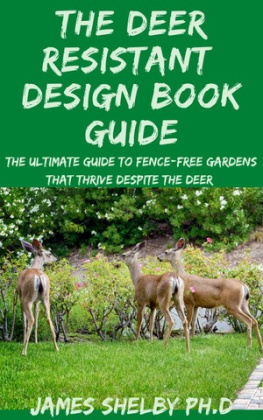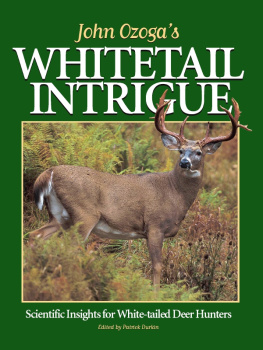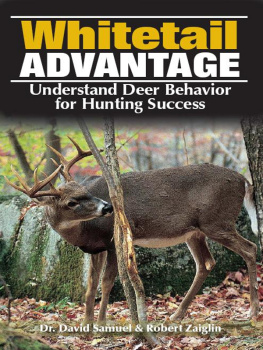First Skyhorse Publishing edition copyright 2015 by Peter Loewer
All rights reserved. No part of this book may be reproduced in any manner without the express written consent of the publisher, except in the case of brief excerpts in critical reviews or articles. All inquiries should be addressed to Skyhorse Publishing, 307 West 36th Street, 11th Floor, New York, NY 10018.
Skyhorse Publishing books may be purchased in bulk at special discounts for sales promotion, corporate gifts, fund-raising, or educational purposes. Special editions can also be created to specifications. For details, contact the Special Sales Department, Skyhorse Publishing, 307 West 36th Street, 11th Floor, New York, NY 10018 or .
Skyhorse and Skyhorse Publishing are registered trademarks of Skyhorse Publishing, Inc., a Delaware corporation.
Visit our website at www.skyhorsepublishing.com.
10 9 8 7 6 5 4 3 2 1
Library of Congress Cataloging-in-Publication Data is available on file.
Cover design by Richard Rossiter
Cover photo credit Thinkstock
All interior uncredited art is by the author. Images in courtesy of Annies Annuals.
Print ISBN: 978-1-63220-535-3
Ebook ISBN: 978-1-63220-936-8
Printed in China
CONTENTS
This book is dedicated to my wife, Jean, who fed them,
The late Ben Wechsler who talked to them,
To Peter Gentling for knowing them and also being a friend of the mighty bear,
The Birdwells, pre et fils , for thought and counsel,
And to the Deer of America, for surviving it all.
Quarry mine, blessed am I
In the luck of the chase.
Comes the deer to my singing.
Old Navaho Hunting Song
Introduction
I teach a class in botanical art at Asheville-Buncombe Technical College, and one of my students lives and gardens in Biltmore Forest, here in Asheville, North Carolina.
Biltmore Forest is a separate enclave within the city with a unique history. It was incorporated in 1923 and became a historic preservation district in 1990.
In the late 1920s, Mrs. Edith Vanderbilt sold 1,500 acres to establish as a suburb of Asheville designed with spacious lots and featuring all the modern amenities. The area was known as the Town of Biltmore Forest, and boasted of planning that underlined being a low-density and master-planned community with all the grace and style evidenced by Biltmore Estates first architect and planner, Frederick Law Olmsted.
And for all the years Ive lived in Asheville (twenty-three), Biltmore Forest has been under attack by hoards of deer. The town has sponsored many public meetings where discussions leapt around the room as subjects changed from hiring bow-hunters to sterilizing the bucks, and opinions were shouted out from homeowners, both pro and con, but, in the end, the final solution was left up to the individual homeowner.
What can I do? my student asked. Theyre attacking everything Ive planted and, I swear, they know that Im a dedicated gardener and will continue to set out plants, even when I know I might lose everything! What can I do?
There are solutions, I answered, but they are not always cheap, and like life in general, they work most of the time but there are no guarantees.
What can I do?
So I told her a few snippets of whats in this book.
I also told her that deer are really intelligent creatures who are not only mirroring the world around them (a world suffering from overpopulation and lack of habitat), but among all the pest animals of America, seem to know just how to convince gardeners in particular and landowners in general that they have personally picked on their gardens for destruction. They can do this because they are beautiful creatures and are symbols of the development of America.
Before I spent twenty years in Sullivan County, New York, where the deer began their attack on our first garden when it was still in the planting stage, I thought that deer were best represented by the final scene of that 1955 soaper, All That Heaven Allows , where a deer walks into the backyard of a trendy home built by Rock Hudson for the older Jane Wyman, and nibbles at an apple.
There was not a dry eye in the theatre.
But during those twenty years, my wife and I gardened on a small cleared area measuring a little over two acres. Our civilized room was the front part of thirty-three acres, acreage surrounded by second-growth forest (but forest just the same), located between Cochecton Center and Lake Huntington in Western Sullivan County. Geographically, we were in the southwestern corner of New York State, but almost everybody considered our home upstate New York because it was not within an hours commute of Manhattan.
After a year spent in making our house (a combination of abandoned farmhouse and resort hotel) livable, we sought escape from carpentry and finishing in working the land.
When the battle with red shale and red clay was close to an end (thanks to compost, lime, and more compost) we began to grow vegetables for the table and the larder.
Soon we two were knee-deep in all sorts of incredible garden pests. In the insect world they ranged from armyworms to tent caterpillars to gypsy moths to Japanese beetles, and finally, ants. In the animal world, the threats came from chipmunks, woodchucks (some call them groundhogs), voles (not moles as moles were never a problem), rabbits, and deer. Of all, the deer were the worst.
Why? It seemed as though they ate all within their path.
It seemed that whatever the season, the local deer population looked upon our land as a trendy restaurant, a place meant to provide endless reserves of food for these very intelligent goats.
So instead of bowing to rising tides of anger, I decided to try a few new (to me) procedures to stop the deer in their tracks. So I asked local farmers and hunters for their advice.
Years passed. Gardens growand gardens come and go.
We now live in Asheville, North Carolina, protected by surrounding highways from problems with deer in the garden. But as The Wild Gardener radio host, Im deluged with questions about how to control deer, what products are available, are there any plants that deer dislike, and many more.
Again I asked farmers and hunters, but this time I also asked highway departments, experts on deer, doctors, vets, and searched out new products on the World Wide Web.
When trying to ferret out plants that deer dislike, Im reminded of the following answer to that question, provided by Joe Seals, my good garden friend from California: After an extensive survey of gardeners in badly deer-infested areas (after a bad winter drought that forced record numbers of wild deer into urban areas), we shortened our list to the following: oleander and old brick.
One more thing: In addition to being a gardener, Im a naturalist. The gardener in me resents the damage that deer do to gardens, while the naturalist always wants to point out that whatever happens, it is not the fault of the deer. As Shakespeare wrote in Julius Caesar , The fault, dear Brutus, is not in our stars, But in our selves.
For we are the disturbers of the environment, we did away with the predators, we took the land for development that deer once lived upon, we did away with the small farm and opened the path to the mega-farm, and we built the highways that they must cross.
Lets not forget!
CHAPTER ONE
All About Deer
The Typical Deer
If dandelions were rare plants everybody would want at least one plant in their garden. And the same holds true for deer. Endangered, they would be desired by all, but in todays numbers theyve become suburban pests. All thoughts of their graceful beauty are gone. Deer are now looked upon like intelligent goats, ready and willing to eat their way through your garden and landscaping.

